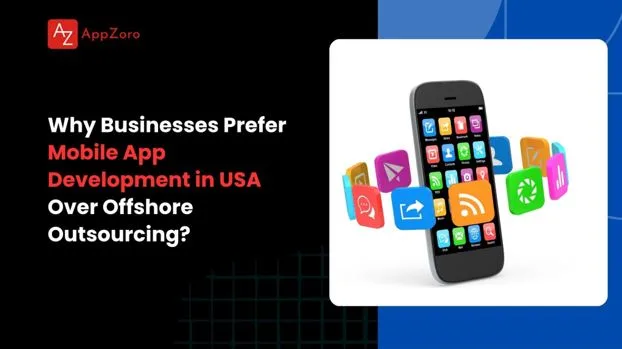How to Develop a Telemedicine App in 2025: A Complete Guide to Telemedicine App Development Solutions
Imagine a hospital where a cardiac patient consults a specialist via a smartphone app from their home, receives remote monitoring alerts and has their data logged directly into the hospital’s EHR. What’s more? Someone in Singapore can upload their ECG report and get instant feedback from a specialist abroad.
This scenario is no longer futuristic. With the rise of full-scale telemedicine app development solutions, organizations worldwide are transforming care delivery models.
Telemedicine is not about replacing doctors; it’s about removing friction. And for organizations exploring how to build a telemedicine app, this is your moment to create real impact.
We’ve seen first-hand how healthcare providers are shifting toward digital-first systems. The goal isn’t just convenience; it’s continuity of care.
Why Building a Telemedicine App Is A Lucrative Venture for Business in the Healthcare Sector
If you look closely, three things are driving this shift: convenience, cost, and connection. Patients want control over how and when they receive care. Hospitals need to reduce operational strain. And technology now makes both possible. Key business advantages include:
- Accessibility: You’re not just connecting patients to doctors. You are connecting people to peace of mind.
- Efficiency: Virtual visits cut overhead costs and keep clinics focused on critical cases.
- Scalability: Once your app is live, you can serve users across cities and time zones without opening new physical branches.
- Brand advantage: Offering a smooth telemedicine experience sets your organization apart in a crowded healthcare market.
Companies like Teladoc Health already serve millions globally, bridging time zones and specialties. That’s proof that the model works and scales.
Interested in telemedicine app development? Then here are some key considerations to keep in mind before you embark on your journey “how to develop a telemedicine app”.
Features & Functionalities That Make a Telemedicine App a Big Hit
Obviously, you will want your telemedicine app to be something engaging that your users can trust and fulfill their basic needs, right? To make it happen, you need the right set of features. Though you can add a multitude of features, it will unnecessarily increase your budget and also the platform complexity.
Here are some core features you must consider adding to the telehealth platform:
| Core Feature | What It Does | Why It Matters |
| User Login & Verification | Patients and doctors sign in through secure authentication | Keeps data safe and builds user trust |
| Video & Audio Consultations | Real-time connection for virtual appointments | The heart of telemedicine |
| Appointment Booking | Schedule, reschedule, and send reminders | Prevents missed sessions and improves efficiency |
| Medical Record Sharing | Upload reports and access previous consultations | Gives doctors the full picture |
| In-App Messaging | Quick follow-ups or clarifications | Keeps communication ongoing |
| Payment & Insurance Integration | Supports multiple payment modes | Simplifies billing |
| Analytics Dashboard | Tracks sessions, ratings, and performance | Helps providers improve service quality |
Picking the Right Tech Stack
Every successful telemedicine app needs an ideal tech stack because the technology you choose determines performance, security, and scalability. Not sure what tech stack is the best bet for telemedicine platforms? Here are the ideal tech stack to help you pick the best ones:
| Layer | Recommended Technologies |
| Frontend (User Interface) | Flutter, React Native, Swift (iOS), Kotlin (Android), Vue.js (Web) |
| Backend (Application Logic) | Node.js, Django (Python), Ruby on Rails, Java Spring Boot |
| Database | PostgreSQL, MongoDB, Firebase, MySQL |
| Real-Time Communication | WebRTC, Twilio, Agora, Vonage |
| API Integration Layer | GraphQL, RESTful APIs, gRPC |
| Security Layer | OAuth 2.0, JWT, SSL/TLS 1.2+, AES-256 Encryption |
| Cloud Infrastructure | AWS (Amazon HealthLake), Microsoft Azure Health Data Services, Google Cloud Healthcare API |
| DevOps & CI/CD | Docker, Kubernetes, Jenkins, GitHub Actions |
| Analytics & Monitoring | Google Analytics, Datadog, ELK Stack, Firebase Crashlytics |
Our advice? Don’t over-engineer early on. Start lean, validate fast, and then grow with purpose.
Regulations and Privacy You Can’t Ignore
Healthcare data is sacred. Mishandling it even once can cost you more than any development error. Here are some essential compliance and regulations you must adhere to while building a telemedicine app:
- Comply with HIPAA, GDPR, and other local data protection laws.
- Always collect explicit patient consent before teleconsultations.
- Maintain detailed audit trails for every user interaction.
- Choose region-specific data storage if local laws demand it.
You should also consider involving legal consultants early during product design. Fixing compliance later is expensive and risky.
Designing an Experience People Actually Love
Telemedicine is deeply personal. When someone uses your app, they’re often anxious or in pain. The design must reassure them. Here’s what users consistently respond to:
- Effortless onboarding: Nobody wants to fill 10 forms to see a doctor.
- Doctor profiles with real credentials: It builds immediate confidence.
- Simple, calm interface: Clean colors, clear buttons, and intuitive navigation.
- Multilingual options: Let people speak in the language they’re most comfortable with.
- Offline or low-data mode: Especially crucial for emerging markets.
Understanding the Cost of Development
Honestly telling there is no one-size-fits-all formula to quote the exact cost of telemedicine app development. The cost of building a telemedicine app can vary widely. The cost factors depends on where you develop it, the level of integration you need, and how complex your compliance setup is.
Here’s a rough estimate of telemedicine app development costs
| Development Stage | Timeframe | Cost (USD) |
| MVP build (core features) | 3–5 months | 40,000–100,000 |
| Advanced version (AI, analytics, monitoring) | 5–12+ months | 100,000–300,000 |
| Enterprise grade system | 12 – 18+ months | 300,000–600,000 |
| Maintenance & support | Ongoing | Depends on usage and scale |
Remember, this is an investment in infrastructure, not a temporary project. The right app will continue paying returns in operational savings and patient retention.
Getting Your App to Market
Once the product is ready, your real journey begins.
- Start small: Roll out in one city, test usability, and gather honest feedback.
- Train doctors and staff: Even the best software fails if users aren’t comfortable using it.
- Track and measure: Watch engagement metrics: session length, drop-offs, satisfaction scores.
- Iterate fast: Fix what’s confusing, remove what’s unnecessary, and refine continuously.
- Scale smart: Expand gradually while maintaining reliability and compliance.
Final Thoughts
If you’re thinking about building a telemedicine app, don’t delay any longer. The technology is mature, users are ready, and the market is expanding fast.
Your next step is to hire telemedicine app development services and take your business to greater heights.






